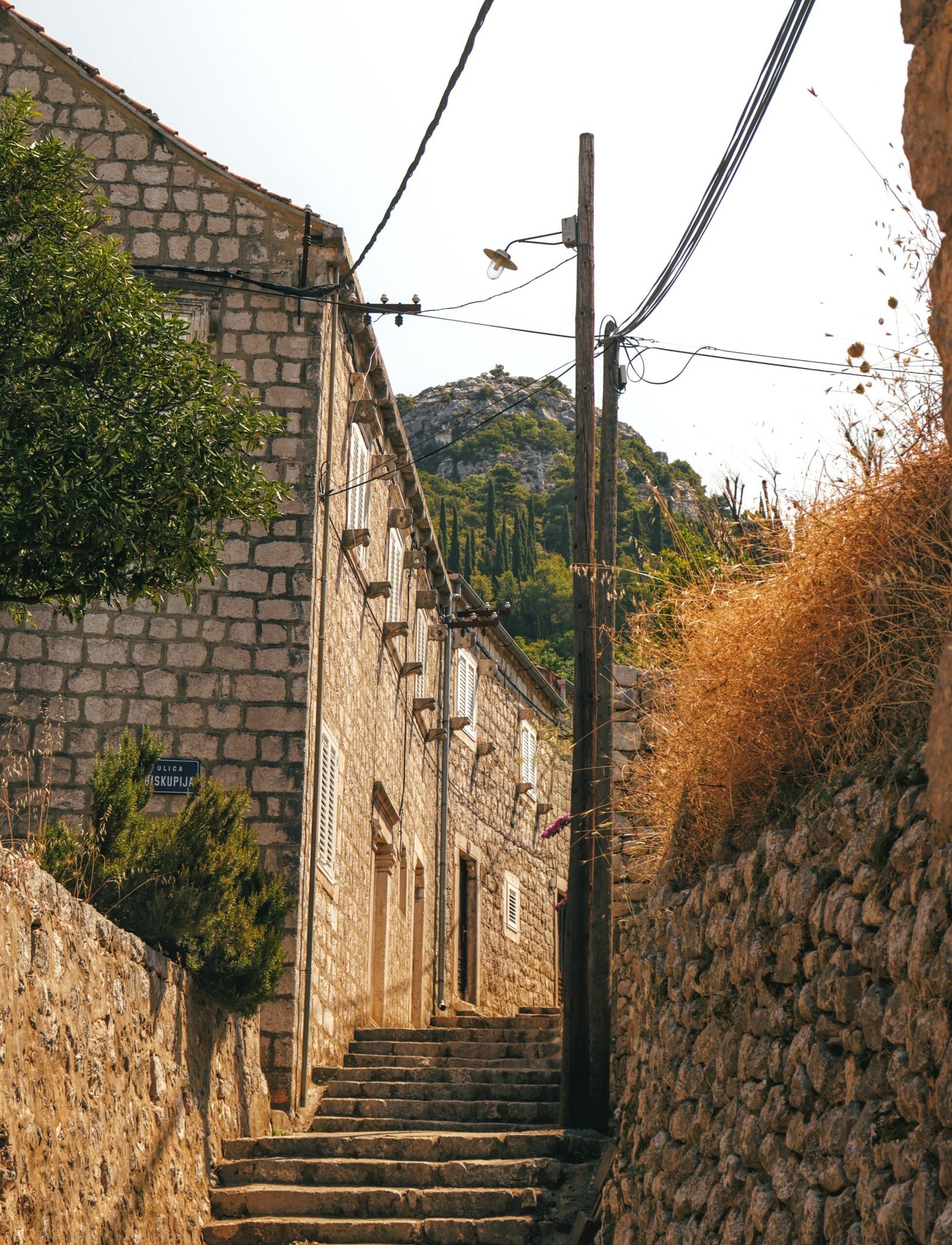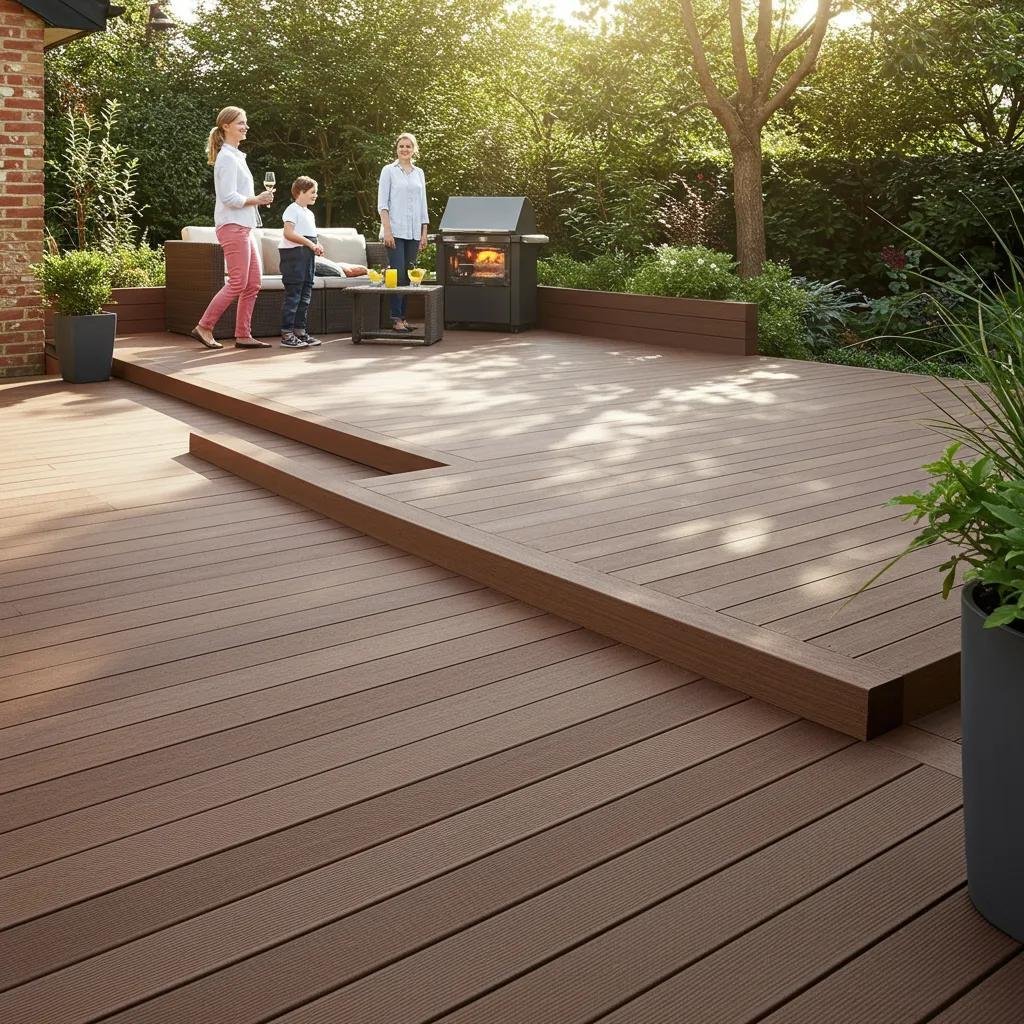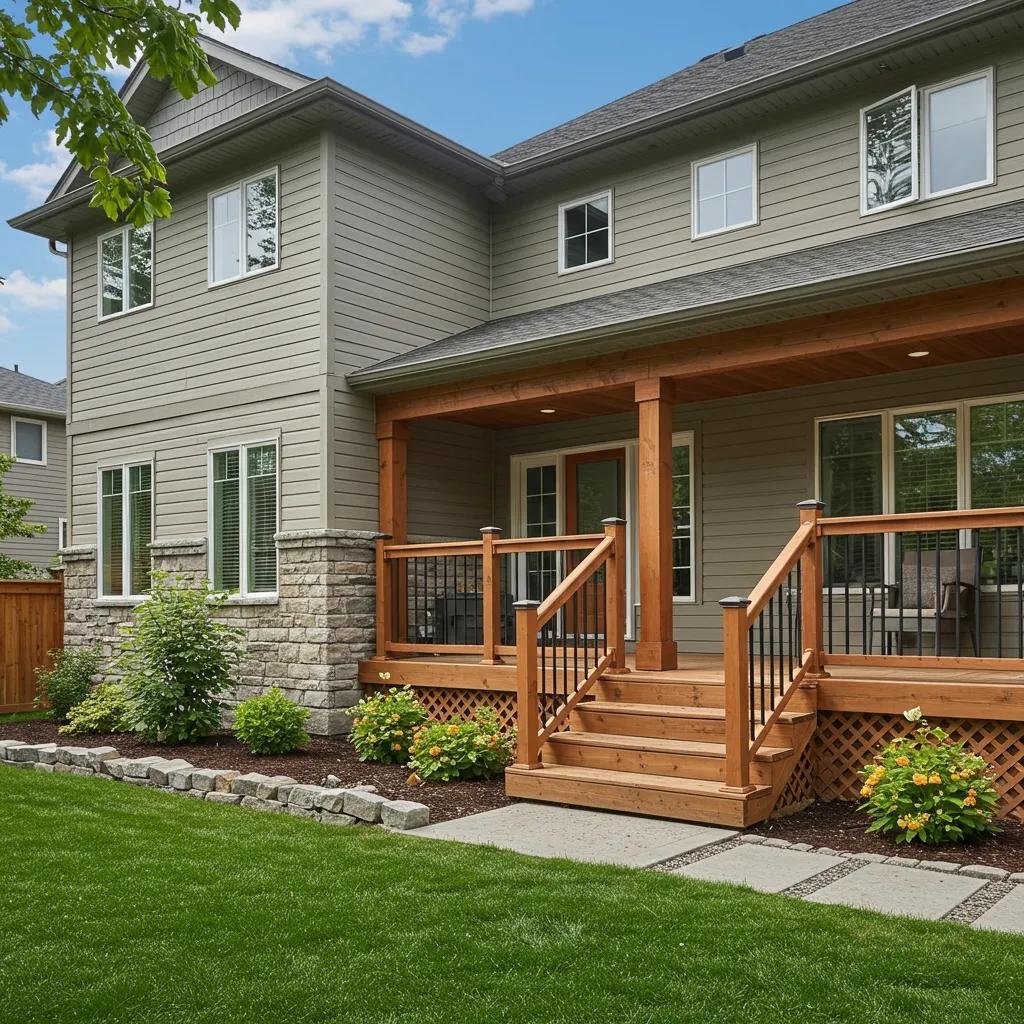Your Ultimate Guide: Selecting Resilient Exterior Remodeling Materials for Lasting Calgary Homes
Choosing materials that stand up to Calgary’s dramatic temperature shifts, heavy snow, and powerful winds is the bedrock of a renovation that delivers enduring beauty and performance. Homeowners who master the art of selecting the right materials for long-lasting exterior remodels gain invaluable peace of mind, significantly lower maintenance expenses, and a substantial boost to their property’s value. This guide delves into why material resilience is paramount, explores top-tier options for siding, decking, and fencing, examines sophisticated trim and roofing solutions, outlines the best practices for professional installation, and breaks down the smart financial strategy of investing in superior components. As your trusted Calgary contractor, YYC Serenity Construction is here to guide you through every step, from material selection to scheduling your complimentary consultation.
Why Does Opting for Resilient Materials Matter for Your Exterior Remodeling Project?
Selecting exterior materials renowned for their longevity is your best defense for protecting your investment and minimizing future repair headaches. Resilient options naturally resist moisture, UV damage, and extreme temperature fluctuations, which translates directly into less upkeep and a more attractive curb appeal. Building longevity into your project from the outset prevents premature failures, slashes lifecycle costs, and ensures your home remains a steadfast sanctuary against Alberta’s challenging climate. Understanding resilience as a core project principle will inform every decision, from the siding you choose to the way it’s fastened.
How Does Calgary’s Unique Climate Affect Material Durability?
Calgary’s climate is characterized by warm summers, frigid winters, and frequent freeze-thaw cycles. These dramatic temperature swings cause most materials to expand and contract, potentially leading to cracks and warping if they lack sufficient flexibility. Winter moisture, often driven by wind and ice, can degrade porous surfaces, while relentless summer UV rays can fade unprotected finishes. Materials specifically engineered for superior moisture management and thermal stability will perform reliably under these conditions, effectively preventing moisture infiltration that accelerates rot or corrosion. Recognizing these regional environmental stresses will guide you toward products rigorously tested for local weather resilience.
What Are the Key Factors Influencing Exterior Material Longevity?
The lifespan of your exterior materials hinges on a confluence of interconnected factors that dictate their long-term performance:
- The material’s inherent composition and its natural resistance to moisture, UV rays, rot, and pests.
- The required maintenance schedule, including how often cleaning, staining, or sealing is necessary.
- The quality of the installation, paying close attention to details like flashing and fastening techniques.
- The manufacturer’s warranty coverage and their commitment to supporting you in cases of weather-related failures.
- The material’s ability to maintain its aesthetic appeal over time, resisting issues like fading or chalking under environmental stress.
Each of these elements plays a role in the material’s service life and its overall cost of ownership. Finding the right balance between low-maintenance features and meticulous installation precision is key to ensuring your materials deliver their rated durability and maximize your renovation’s return on investment.
How Does Material Resilience Impact Your Home’s Value and Return on Investment?
Investing in resilient exterior materials not only enhances your home’s resale appeal but also significantly improves its energy efficiency, directly contributing to increased home equity. High-performance siding and roofing can lead to lower insurance premiums and reduced utility bills by enhancing insulation and wind resistance. Savvy potential buyers recognize the value of exteriors that remain virtually maintenance-free for years, often leading to quicker sales at premium prices. Studies show that resilient remodels deliver lifecycle savings that frequently surpass their initial cost premiums within five to seven years, firmly establishing material longevity as a strategic financial decision.
What Are the Top

for Calgary Homes?
Selecting siding known for its resilience is fundamental to ensuring superior weather resistance, lasting aesthetic appeal, and robust structural protection. Durable cladding acts as a vital barrier against water infiltration, minimizes maintenance demands, and preserves your home’s curb appeal through Calgary’s challenging seasonal cycles. Below, we highlight leading siding choices meticulously engineered for Alberta’s climate and your long-term satisfaction.
What Are the Advantages and Disadvantages of Fiber Cement Siding?
Fiber cement siding, a sophisticated blend of cement, sand, and cellulose fibers, offers a non-combustible, low-maintenance cladding solution. It boasts exceptional resistance to rot, insect infestation, and extreme weather, while artfully mimicking the look of natural wood grain. On the downside, fiber cement can be heavier than vinyl, necessitates professional installation to prevent cracking, and may involve a higher initial investment. However, its superior fire rating and remarkable resistance to UV-induced fading make it an exceptionally robust choice for Calgary residences.
How Does Vinyl Siding Perform in Extreme Weather Conditions?
Vinyl siding provides outstanding moisture resistance and features color formulations that resist fading, making it both low-maintenance and budget-friendly. Modern, impact-modified vinyl formulations are designed to resist cracking even in sub-zero temperatures and often incorporate vented panels to prevent moisture buildup behind the cladding. While vinyl may not possess the inherent rigidity of fiber cement or masonry, its straightforward installation process and lifetime color warranties offer homeowners reliable performance with minimal ongoing upkeep.
Why Choose Stone and Brick Veneer for Enduring Exterior Protection?
Stone and brick veneer offer a timeless aesthetic coupled with exceptional durability, standing strong against hail, fire, and moisture with virtually no significant maintenance. Their inherent thermal mass helps stabilize indoor temperatures, and their non-porous surfaces resist staining and chipping. While installation costs can be higher due to the skilled labor involved, these materials rarely need replacement and often outlast the underlying structure, positioning veneer cladding as a heritage-grade solution for your home.
Durable Masonry Materials for Calgary Homes
Brick and stone are durable materials that never go out of … structural engineer with the Calgary office of Halcrow Yolles. … the impact of construction on the environment, masonry is also …CANADIAN MASONRy, Unknown Author, Unknown
How Can Treated and Engineered Wood Siding Achieve Extended Lifespans?
Treated and engineered wood products masterfully combine the natural beauty of wood with significantly enhanced weather resistance. Pressure-treated wood is infused with specialized preservatives that effectively combat rot and insect damage, while engineered wood composites utilize bonded resin layers to resist swelling and warping. Regular inspections and annual applications of a high-quality sealant are crucial for maintaining optimal water-shedding properties. Modern coatings can extend the lifespan of these materials to up to 25 years when properly installed over a weather-resistive barrier and under the guidance of expert professionals.
How Do Siding Materials Compare in Durability, Cost, and Maintenance?
Here’s a comparative overview of leading siding options, focusing on their durability, maintenance needs, and investment value:
Which Long-Lasting Decking Materials Are Ideal for Alberta’s Outdoor Projects?

Constructing a deck that can withstand Calgary’s extreme seasonal changes is essential for enjoying safe outdoor living and avoiding costly repairs. Choosing the right decking material is key to preventing rot, splitting, and fading, thereby maintaining structural integrity and aesthetic appeal year after year.
Why Is Composite Decking a Low-Maintenance, Resilient Choice?
Composite decking artfully combines wood fibers with recycled plastic and advanced UV inhibitors, delivering exceptional weather resistance and remarkably low maintenance. It effectively resists moisture absorption, splintering, and insect damage, all while maintaining excellent color stability even under intense sunlight. Composite boards often feature multi-chamber designs for enhanced strength and hidden-fastener systems for a sleek, clean appearance. Homeowners appreciate the splinter-free surface and the peace of mind offered by manufacturer warranties often extending up to 25 years.
How Does Pressure-Treated Wood Offer Cost-Effective Longevity?
Pressure-treated wood undergoes specialized preservation processes that provide robust protection against rot, mold, and insect infestation. When installed correctly over joists with adequate air circulation and finished with a quality stain or sealant, it can offer dependable service for 15–20 years. Its primary advantage lies in its lower initial material cost compared to composites, balanced by slightly more frequent maintenance efforts required to preserve its appearance and moisture resistance.
What Makes Aluminum Decking Highly Resilient?
Aluminum decking boasts an unmatched strength-to-weight ratio and offers indefinite resistance to corrosion, rot, and insect damage. Its innovative perforated plank designs facilitate rapid drainage and minimize snow accumulation, while factory-applied powder coatings significantly enhance UV resistance. Although the initial price point may exceed that of wood-based options, aluminum decks provide decades of maintenance-free performance and unwavering structural safety, completely eliminating concerns about decay.
How Does PVC Decking Resist Fading and Staining?
PVC decking is constructed entirely from solid polyvinyl chloride, meticulously engineered for superior moisture and stain resistance, containing no wood content whatsoever. Advanced cell-structured cores effectively resist expansion and contraction, preventing warping even in challenging freeze-thaw conditions. Proprietary cap layers provide robust shielding against stains, mold, and mildew growth. PVC boards are lighter than composites, simplify installation, and frequently come with lifetime fade warranties, ensuring enduring visual appeal.
Decking Material Comparison
What Are the Most Weather-Resistant Fencing Solutions for Exterior Remodeling?
A fence that can withstand Calgary’s harsh elements is crucial for maintaining privacy and structural integrity while clearly defining your property boundaries. Weather-resistant fencing materials combine inherent strength with minimal upkeep requirements to ensure a long and reliable service life.
How Durable and Aesthetic Is Vinyl Fencing?
Vinyl fencing features smooth, non-porous surfaces that effectively repel moisture and resist fading. Modern formulations are enhanced with UV inhibitors for superior color retention and reinforced rails for increased wind resistance. Vinyl panels eliminate the need for painting or staining, and a simple cleaning routine is all that’s needed to restore their original brightness. This synthetic fencing option offers remarkable aesthetic flexibility coupled with decades of maintenance-free performance.
What Are the Benefits of Metal Fencing: Wrought Iron and Aluminum?
Metal fencing provides a robust combination of security and exceptional longevity. Wrought iron gates and panels offer classic elegance alongside impressive tensile strength, while aluminum systems excel in rust resistance and are significantly lighter. Both materials readily accept durable powder-coat finishes that effectively block oxidation and maintain their appearance over time. Routine inspections for chipped coatings and occasional touch-up paint applications will ensure a lifespan exceeding 40 years with minimal care.
How Can Treated Wood Fencing Be Maintained for Maximum Lifespan?
Treated wood fencing utilizes advanced preservative infusion techniques to provide excellent defense against rot and insects, all while retaining its natural warmth and texture. Proper installation, including setting posts in concrete and ensuring adequate ground-level clearance, is vital to prevent moisture wicking. Annual cleaning and sealing with a high-quality water-repellent stain will preserve the wood’s integrity and color. With diligent care and maintenance, treated wood fences can reliably last 20–25 years before requiring replacement.
How Do You Choose Resilient Exterior Trim, Fascia, and Soffit Materials?
Exterior trim, fascia, and soffits play a critical role in protecting vulnerable roof edges and eaves from moisture intrusion and pest entry. Selecting resilient materials for these essential components completes the weather-resistant envelope of your home.
Why Is PVC Trim Resistant to Rot and Insects?
PVC trim boards are expertly crafted from rigid polyvinyl chloride, infused with UV stabilizers to prevent cracking and discoloration. Their impermeable surfaces create an effective barrier against water infiltration, completely eliminating the risk of rot or insect damage. PVC trim maintains sharp edges and excellent paint adhesion without the warping or extensive maintenance demands associated with traditional wood. Its inherent dimensional stability ensures lasting protection for fascia, soffits, and decorative moldings.
How Does Fiber Cement Trim Complement Durable Siding?
Fiber cement trim shares the same advanced composition as fiber cement siding, allowing for the creation of a seamless, low-maintenance exterior system. These trim boards offer superior resistance to fire, moisture, and pests, while readily accepting paint finishes that resist fading. Matching fiber cement trim and siding ensures uniform thermal expansion rates and a cohesive aesthetic. Professional installation by an experienced contractor guarantees proper flashing and caulking for a perfectly watertight finish.
What Roofing Materials Best Withstand Extreme Weather Conditions?
Your roof serves as the ultimate shield against wind, hail, and extreme temperature fluctuations. Choosing materials with a proven track record of performance in Calgary’s climate is essential for preventing leaks, minimizing ice dam formation, and extending the overall service life of your roof.
How Do Asphalt Shingles Provide High-Performance Protection?
Asphalt shingles are engineered with fiberglass reinforcement and ceramic granules, creating a robust weather-resistant barrier effective across a wide range of temperatures. High-wind rated shingles are designed to adhere firmly even under extreme gusts, while specialized algae-resistant coatings prevent unsightly streaks. Proper underlayment and ventilation, combined with professional installation, enable asphalt roofs to deliver 20–30 years of dependable service at a highly cost-effective price point.
Why Is Metal Roofing a Long-Lasting, Energy-Efficient Option?
Metal roofing panels, whether crafted from steel or aluminum, offer exceptional durability against severe hail impact, heavy snow loads, and relentless UV degradation. Reflective coatings significantly reduce solar heat gain, leading to improved attic energy efficiency. Seam-locking panel systems are expertly designed to prevent water infiltration during challenging freeze-thaw cycles. While metal roofing typically involves higher upfront costs, its service life often exceeds 50 years with minimal maintenance beyond visual inspections and occasional sealant upkeep.
Hail Impact Resistance of Metal Roof Panels
… damage under region-specific hail hazards. To address this gap, the current study investigates the hail impact on metal roof … [5] metal roofs, which have been rated for impact resistance, …Prediction of extent of damage to metal roof panels under hail impact, D Saini, 2019
How Can You Maximize Durability with Professional Installation and Maintenance?
High-quality materials can only deliver their full value when they are installed and maintained with meticulous precision. Expert installation effectively prevents common failure modes, and proactive upkeep significantly extends the performance horizon of every component.
Why Is Professional Installation Crucial for Material Longevity?
Professional installers adhere to industry-leading best practices for flashing, fastening, and moisture management—critical steps that DIY approaches often overlook. Correct underlayment placement, precise fastener spacing, and the appropriate selection of sealants ensure that water cannot bypass crucial cladding or roofing layers. Experienced contractors expertly mitigate thermal expansion issues, guarantee compliance with manufacturer warranties, and minimize the likelihood of callbacks for premature repairs. Partnering with a certified installer from YYC Serenity Construction is the surest way to safeguard your material investment.
What Maintenance Practices Extend the Life of Exterior Materials?
Regular maintenance is key to preserving protective coatings, removing debris, and preventing moisture from becoming trapped. Recommended practices include washing siding and deck surfaces annually, inspecting sealant joints biannually, clearing gutters and soffits each spring, and promptly addressing any minor damage with appropriate touch-up products. Documenting all inspections and service dates simplifies warranty claims and significantly prolongs the appearance and performance of all your exterior materials.
How Does YYC Serenity Construction Ensure Durable Exterior Results?
YYC Serenity Construction employs industry-leading installation techniques, meticulously sources high-quality building products rigorously tested for Alberta’s climate, and provides transparent project planning from start to finish. Our skilled crews perform detailed substrate preparation, expertly install weather-resistive barriers, and conduct thorough final inspections to verify system integrity. Homeowners benefit immensely from our comprehensive quality assurance process, extended craftsmanship warranties, and complimentary consultations designed to guide material selection for maximum lifespan and optimal return on investment.
What Is the Cost-Benefit Analysis of Investing in Resilient Exterior Materials?
Carefully evaluating upfront expenses against long-term savings clearly illustrates the significant financial advantages of choosing superior components. A comprehensive cost-benefit analysis weighs the initial investment, ongoing maintenance costs, and eventual replacement expenses against the gains in performance, energy efficiency, and enhanced property equity.
How Do Upfront Costs Compare to Long-Term Savings?
Higher-quality siding, decking, and roofing materials may command greater initial outlays—often 10–30 percent more than basic options. However, the reduction in maintenance spending, extended service life, and lower utility bills frequently offset this premium within a 5–7 year timeframe. Resilient solutions minimize the need for patch repairs, repainting, or premature replacement, ultimately delivering substantial net savings over a typical 20-year remodeling horizon.
How Do Resilient Materials Enhance Property Value?
Homes finished with enduring exterior materials are highly attractive to buyers seeking low-maintenance investments, often commanding sale prices up to 5 percent higher compared to homes with standard remodels. Features such as composite decks, metal roofs, and fiber cement siding consistently rank high on buyer checklists for their longevity and undeniable curb appeal. These tangible benefits translate directly into faster sales and an improved return on your remodeling expenditure.
What Are the Warranty and Environmental Considerations?
Extended warranties—frequently 25 years or more—serve as a strong indicator of manufacturer confidence in material performance and significantly reduce your lifecycle risk. Many resilient products incorporate recycled content and support sustainable forestry certifications, aligning your remodel with environmentally conscious building practices. Choosing materials with a minimal environmental footprint and robust warranties maximizes both the sustainability and financial security of your exterior project.
Resilient exterior materials, coupled with expert installation, form the essential foundation of a renovation that truly stands the test of time and weather. By prioritizing products meticulously engineered for Calgary’s unique climate, homeowners achieve unparalleled peace of mind, significantly reduced maintenance burdens, and a substantial improvement in property value. Partnering with professional contractors ensures that every component is not only selected wisely but also installed flawlessly for optimal performance and complete warranty support. Investing in quality from the very beginning transforms your outdoor living spaces into enduring, low-maintenance assets for years to come.





Comments